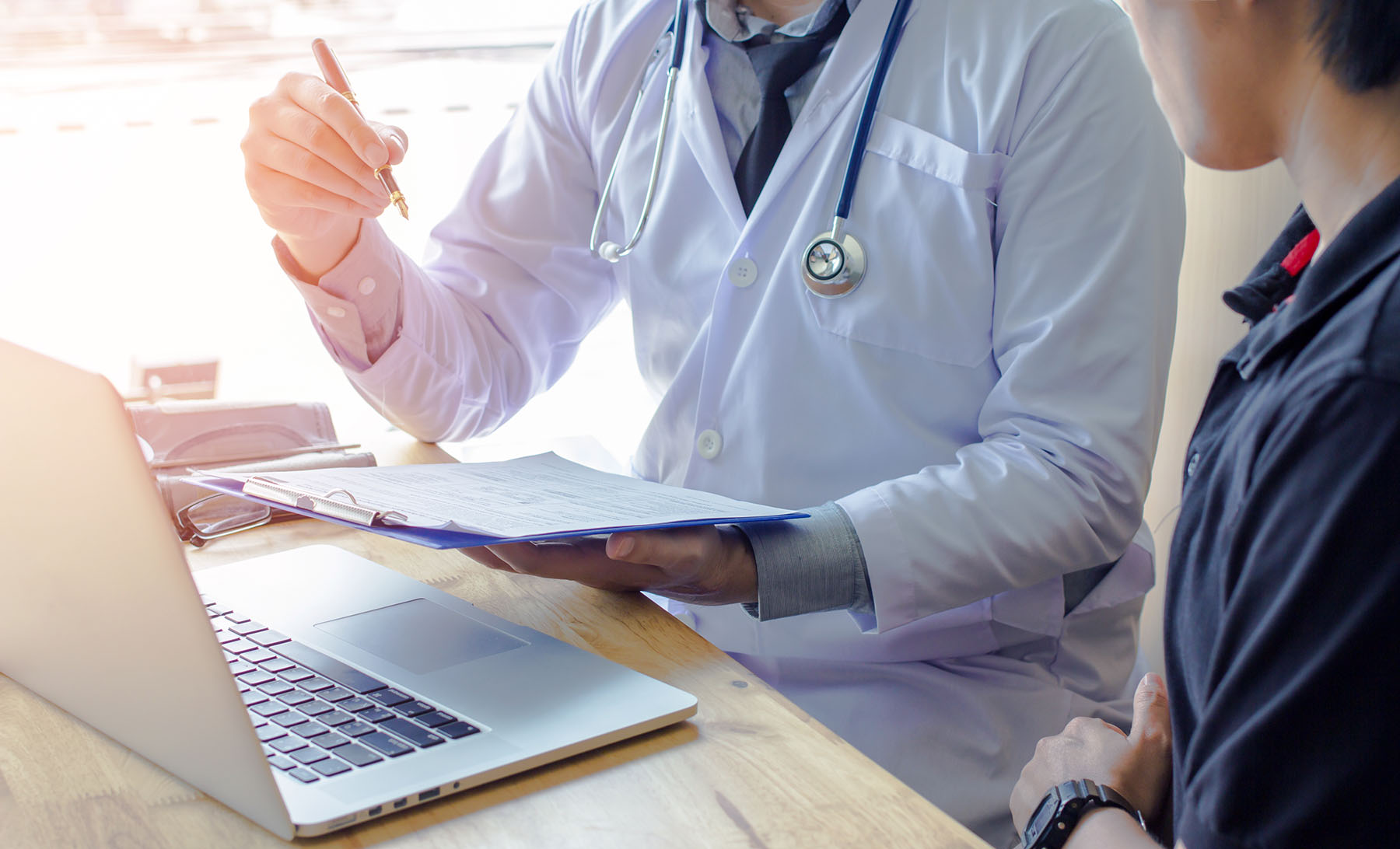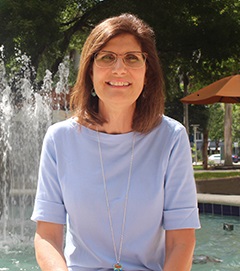Yes, Men Can Get Breast Cancer

The first time Antonio Becerra felt a lump in his breast, he didn’t give it a second thought. The last thing he was worried about was breast cancer. But when he went to his doctor for an ankle injury, he remembered to mention it — which was a smart thing to do.
After an ultrasound and a biopsy, Becerra, a father of two who lives in Sunrise, received a diagnosis he hadn’t expected. “I thought, really? Really!!” he says. Now, more than four years later. “I hadn’t thought men could get breast cancer.”
Breast cancer in men is very rare.
It accounts for about one percent of all cases in the U.S. and only one in a 1,000 men will ever be diagnosed with breast cancer. About 2,670 new cases of invasive breast cancer will be diagnosed this year, estimates the American Cancer Society.
“Because you don’t hear about it, men don’t think it can happen to them,” says Dr. Alejandra Tobon Perez, a breast oncologist at the Sylvester Comprehensive Cancer Center. “It they find a lump, they don’t think twice about it.”
Yet, the mortality rate for men with breast cancer is much higher than for women. “The main problem is the late detection,” adds Dr. Perez, who is also director of the Breast Cancer Program at Sylvester-Plantation. “They’re not doing mammograms. They’re not doing self-checks. By the time we see them the disease is advanced.”
A new study, published in JAMA Oncology, bears this out:
Male breast cancer patients have a 19% higher mortality rate.
The researchers reached this conclusion by examining data for more than 1.8 million female patients and 16,025 male patients.
Though men tend to be diagnosed later, Dr. Perez says that the symptoms, the biology and the treatment of the disease are very similar for both men and women. In childhood, both sexes have a small amount of breast tissue, which consists of fat, ducts that carry milk to the nipple and lobules (milk-producing glands). While women develop more breast tissue in puberty, in men it remains the same. However, that breast tissue can turn cancerous.
The overwhelming majority of men are diagnosed with ductal carcinoma, which is cancer that begins in the milk ducts (ductal carcinoma). In rare instances they may have lobular carcinoma, which begins in the milk-producing glands (lobular carcinoma). In even rarer cases, they can be diagnosed with Paget’s disease of the nipple and inflammatory breast cancer.
What are the symptoms?
The symptoms for men (and women) include a lump in the breast, discharge from a nipple, changes in the nipple (scaling, redness or turning inward) as well as changes in the skin covering of the breast. Men and women also share most of the risk factors: age, obesity, liver disease, a family history of breast cancer, and inherited mutated genes such as BRCA2.
In addition, men can develop breast cancer after taking estrogen-related drugs, such as those used for prostate cancer, or after having testicle disease or surgery. (In some cases, men born with more than one copy of the X chromosome — a syndrome known as Klinefelter’s — have lower levels of male hormones and higher estrogens, which can also result in breast cancer.)
Though most male patients discover their breast cancer in their 60s, Becerra, now 41, was in his late 30s when he was first diagnosed. He also had no family history of breast cancer and tested negative for any mutated genes — but he had been exposed to radiation in his native Brazil as a child, and this likely triggered the mutant cells.
In 1987, his hometown experienced a Chernobyl-like contamination, later identified as one of the world’s worst nuclear disasters. In addition to Becerra, Dr. Perez is treating another patient from the same town, a woman.
When diagnosed, most men prefer a mastectomy, Dr. Perez says, while women lean towards a lumpectomy when possible. Becerra chose a double mastectomy but didn’t undergo chemotherapy or radiation. In 2018 the cancer returned: three lumps and intrusion into the lymph nodes.
When he switched oncologists and began seeing Dr. Perez, “I decided to do the whole thing. I didn’t want to take any chances,” he said. He first underwent 12 rounds of chemotherapy, then had surgery and later finished with 25 sessions of radiation. In August he was declared cancer-free.
Becerra was fortunate that his cancer was caught early.
For many male breast cancer patients, a late diagnosis is often fatal. Part of the problem, Dr. Perez, explains, is the lack of awareness. “It’s a pink world. We have pink ribbons and pink decorations, and many of the breast centers are called women centers.”
The news media has highlighted more stories about men with breast cancer since Mathew Knowles, singer Beyonce’s father, told a morning show anchor that he had been treated for breast cancer. Knowles said tests revealed he had one of the breast cancer genes that also puts him at increased risk for prostate and pancreatic cancer.
“I’m happy he went public because anytime a high-profile person talks about the experience it brings awareness to the disease,” Dr. Perez says. “It happened with Angelina Jolie.”
She also points to male breast cancer survivors who have founded advocacy and support groups, the Male Breast Cancer Coalition and the HIS Breast Cancer Awareness. They offer instructional videos and educational programs and encourage men to get checked for breast cancer.
“We as providers need to be more aware of this,” Dr. Perez adds. “We need to make breast cancer programs more welcoming of men.”
Maybe a blue ribbon to go along with the pink?

Ana Veciana-Suarez, Guest Columnist
Ana is a regular contributor to the University of Miami Health System. She is a renowned journalist and author, who has worked at The Miami Herald, The Miami News, and The Palm Beach Post. Visit her website at anavecianasuarez.com or follow @AnaVeciana on Twitter.
Originally published on: November 07, 2019
Tags: breast oncology, Dr. Alejandra Tobon Perez, make breast cancer
